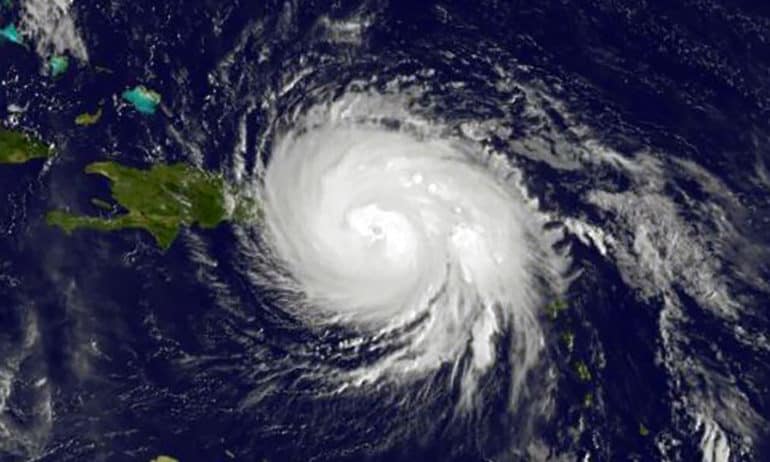Hurricane Maria, the second major hurricane to pass through the Caribbean in a matter of weeks, directly hit Puerto Rico on September 20, 2017. Arriving as a Category 4 storm, Maria has caused severe flooding, structural damage to homes, transportation routes, and critical infrastructure, and the loss of all electricity across the island.
Puerto Rico is expected to suffer a loss of US$780 million in agricultural yields or about 80 percent of the total crop value in Puerto Rico, The New York Times reports, with plantain, banana, and coffee crops taking the hardest hit. Landslides and flooding have covered many roads in debris, cutting out major agriculture transportation routes.
Federal agencies trying to provide emergency response are finding it difficult to safely access the island, with airports and harbors suffering severe damage. Medical facilities are in precarious shape, more than 80 percent of the island is without water service, and it could take months to restore power to the island. A weakened dam could potentially break, posing a flood threat to thousands of homes downstream.
A number of relief efforts and charity groups are providing aid to victims in the most vulnerable and hardest-hit communities. The Puerto Rico Real-Time Recovery Fund, managed by nonprofit organizations ConPRmetidos and Foundation for Puerto Rico, is directing 100 percent of donations to long-term relief for hurricane victims. They are currently financing needs assessment efforts to identify and prioritize the most critical community needs, and long-term structural and power repairs to the most vulnerable communities. To avoid duplicity, they are working in coordination with the Puerto Rico National Guard and focusing on areas that are unattended.
“As one of the leading independent, non-partisan, nonprofit economic empowerment NGOs in the island, no other time has our mission been so relevant. Please help us help power up Puerto Rico,” ConPRmetidos says.






